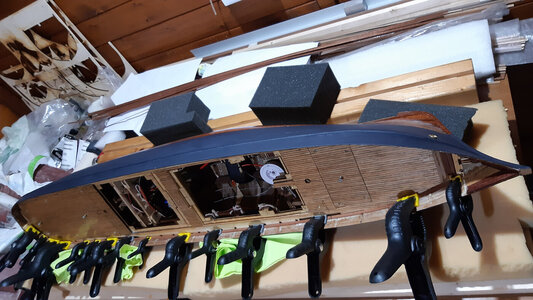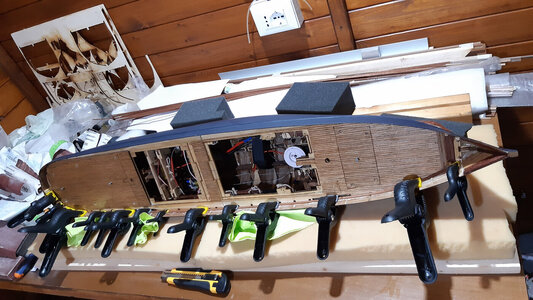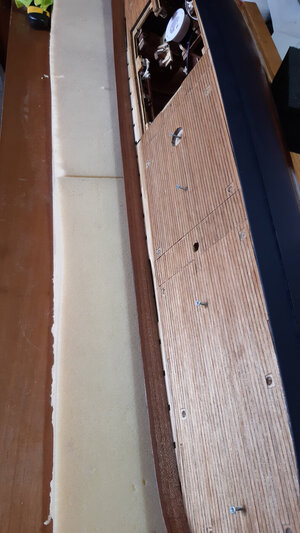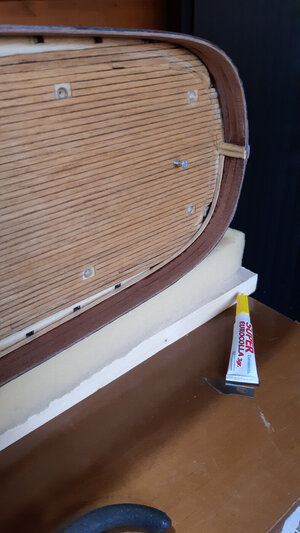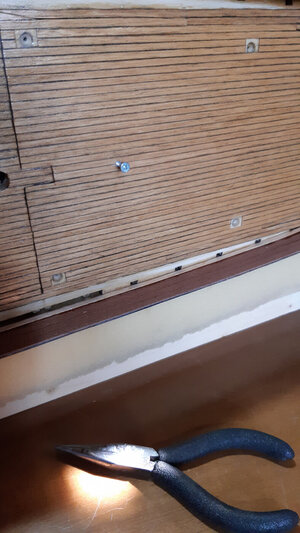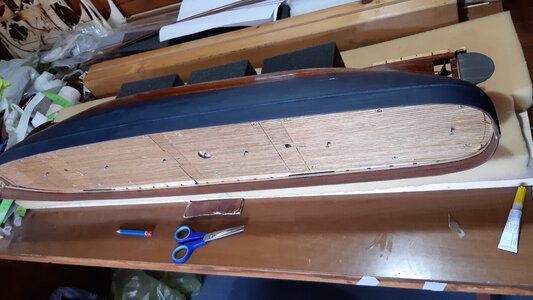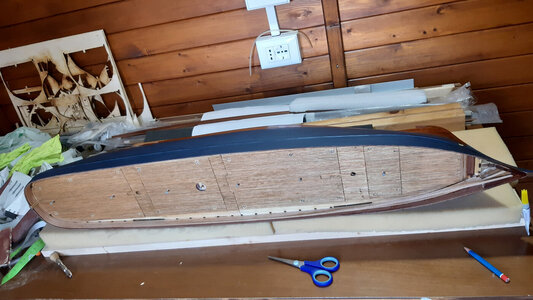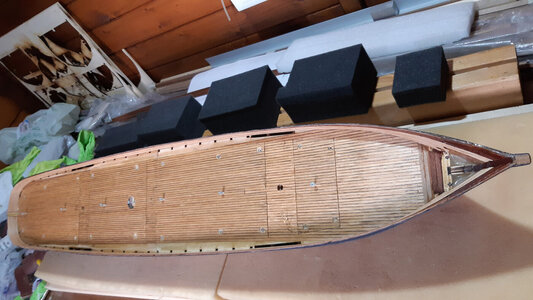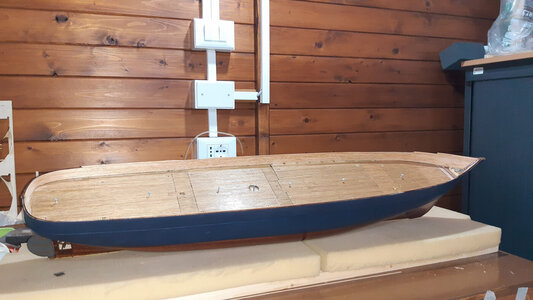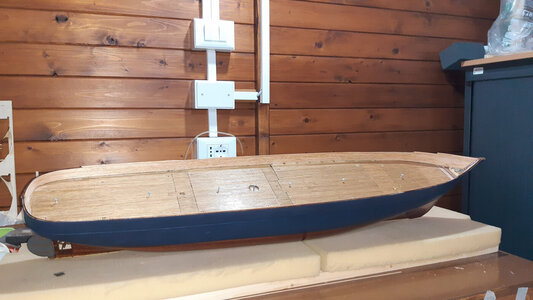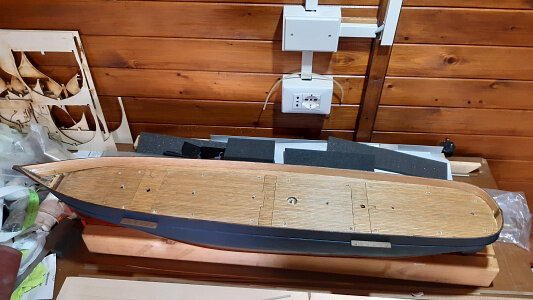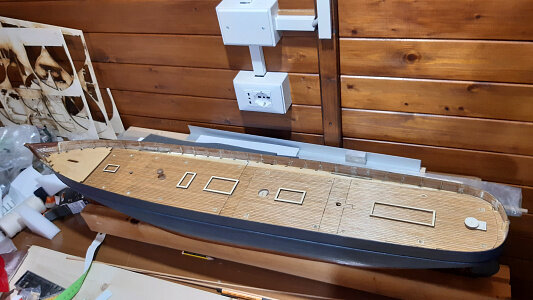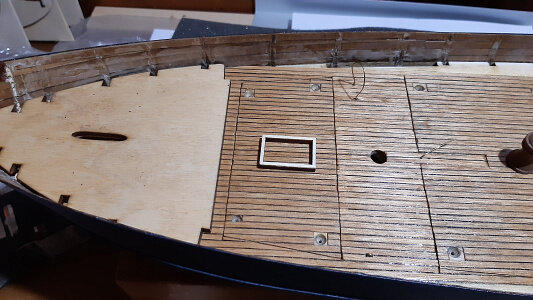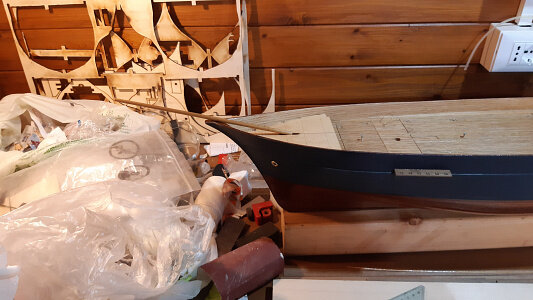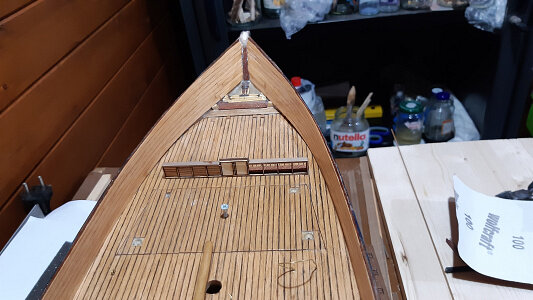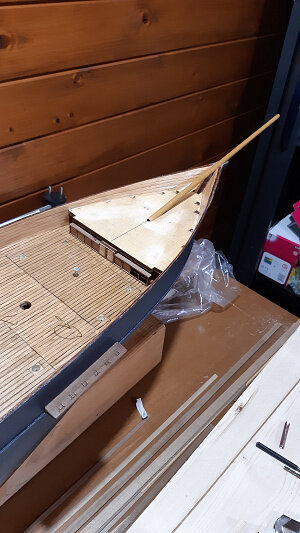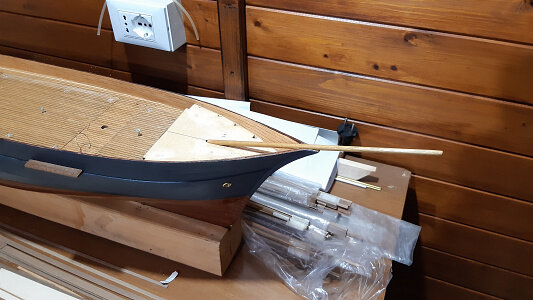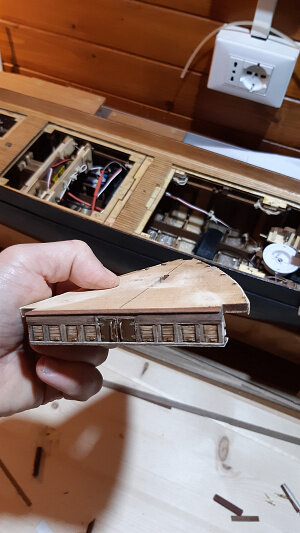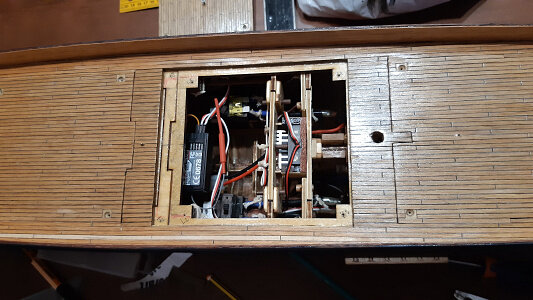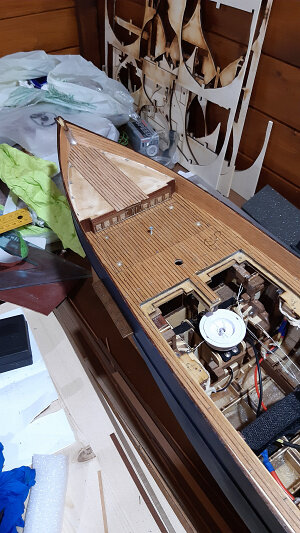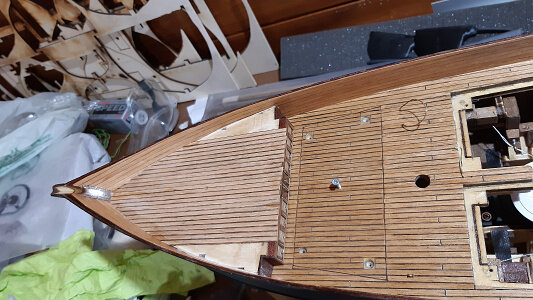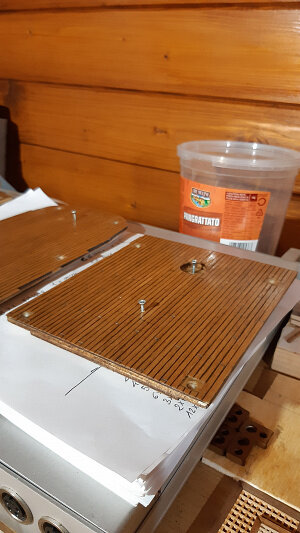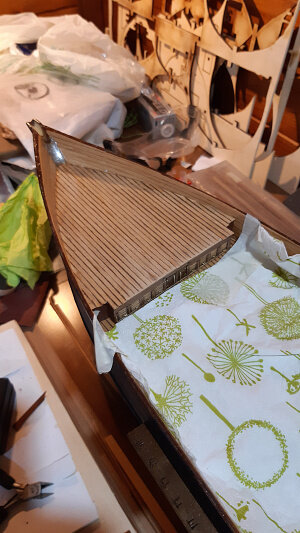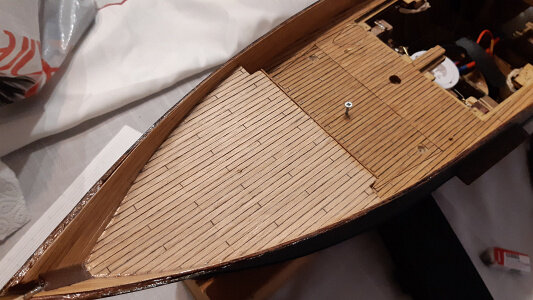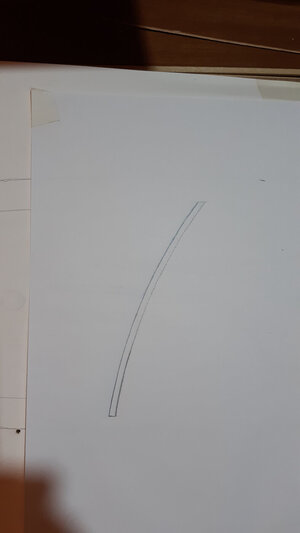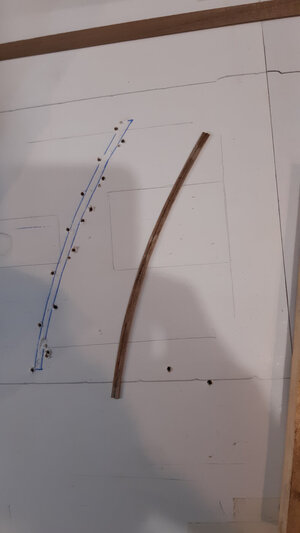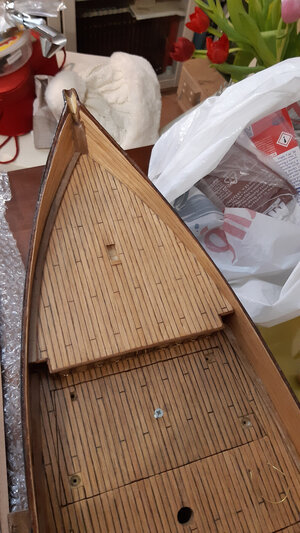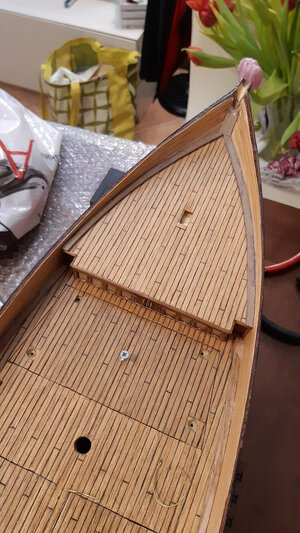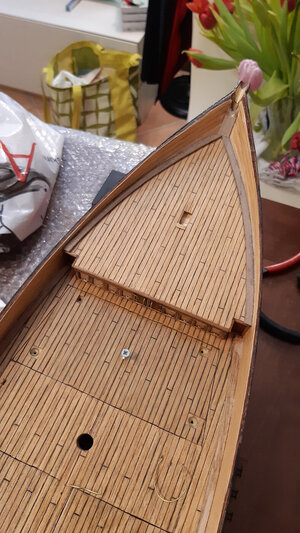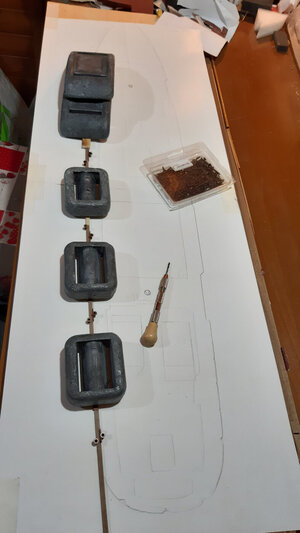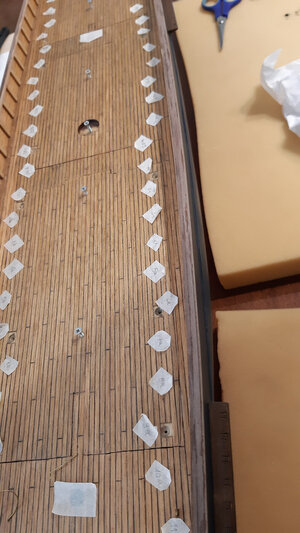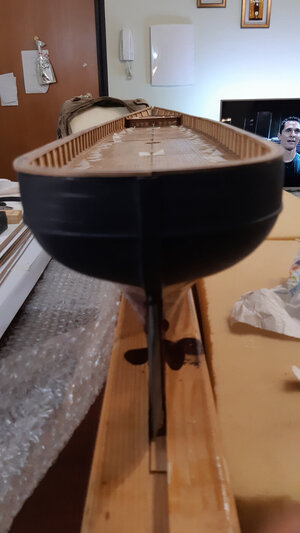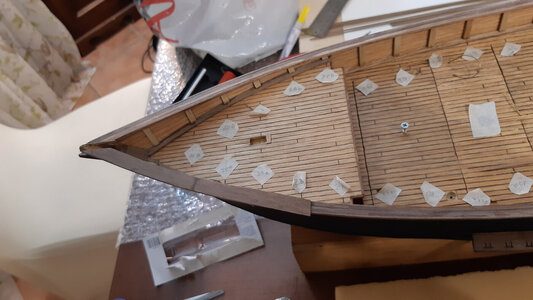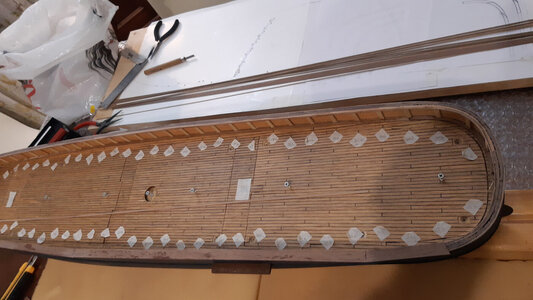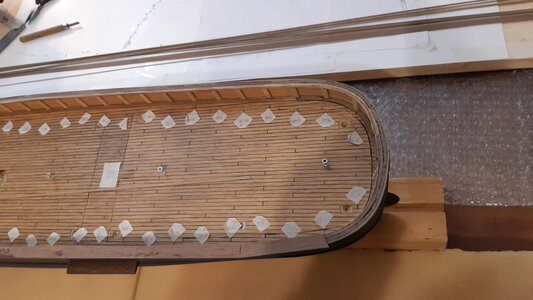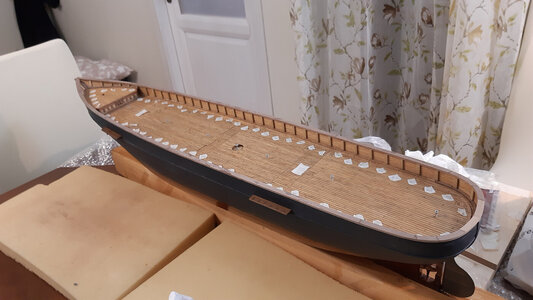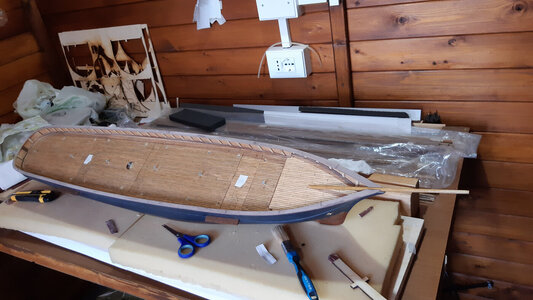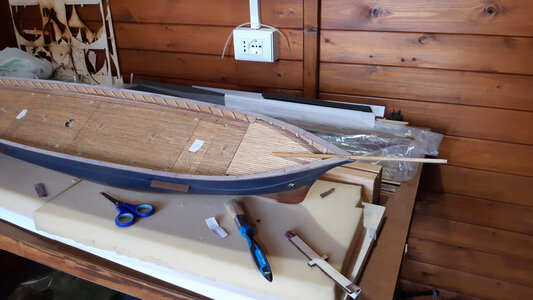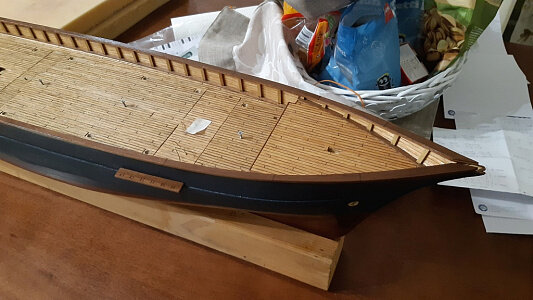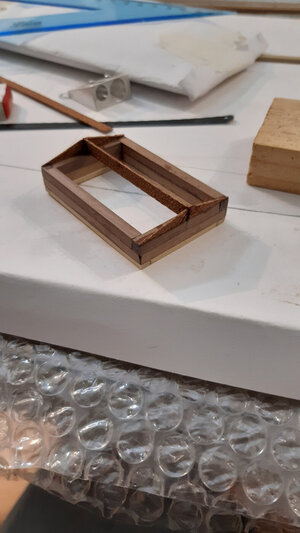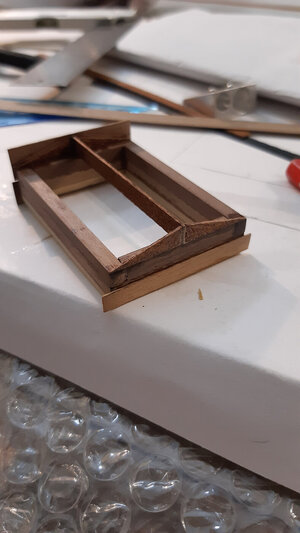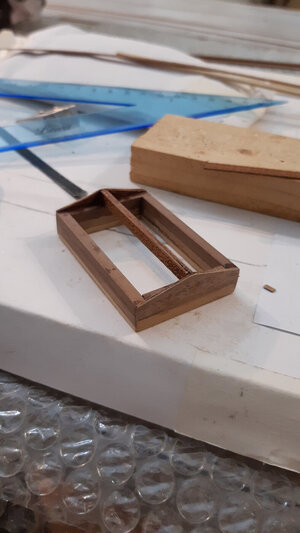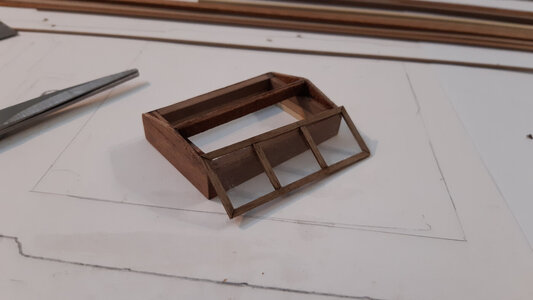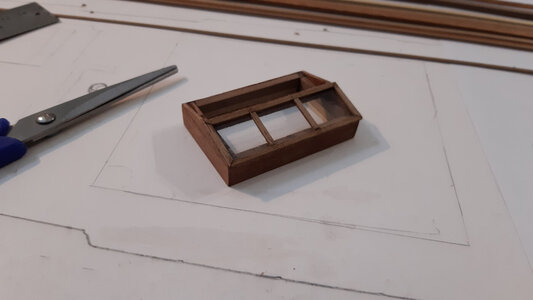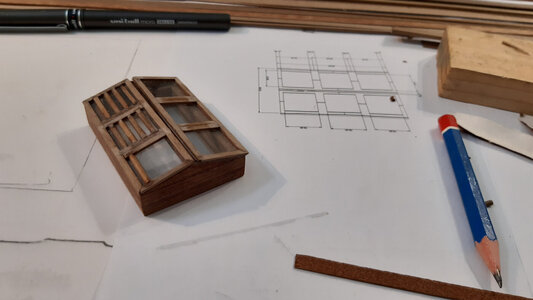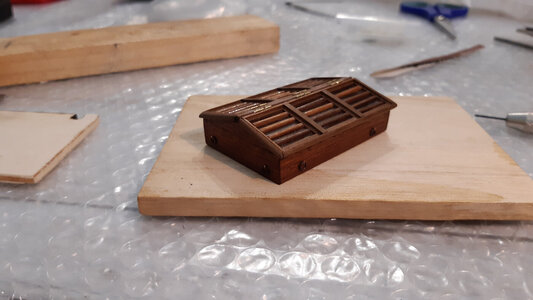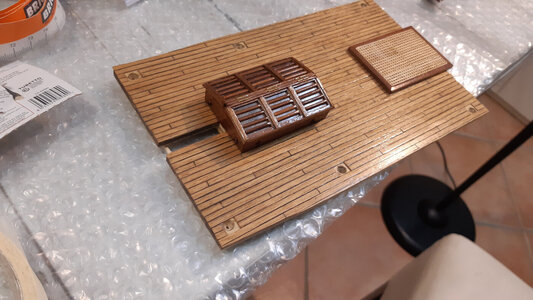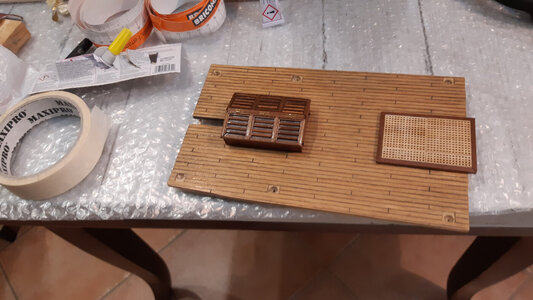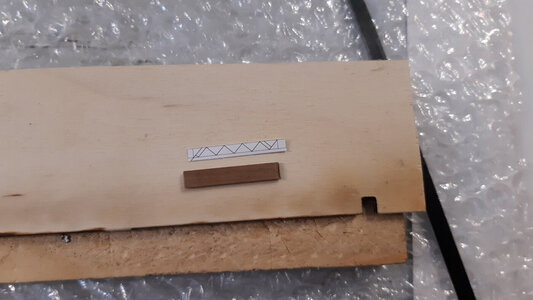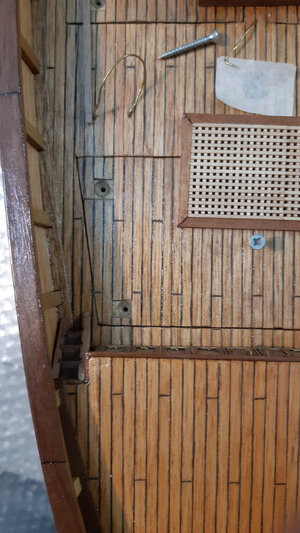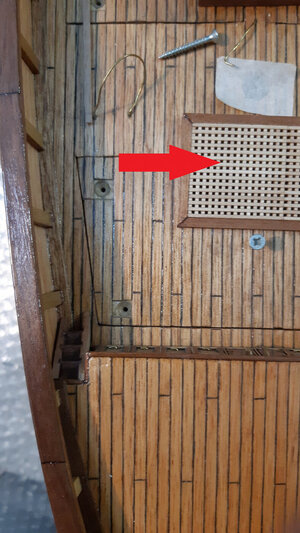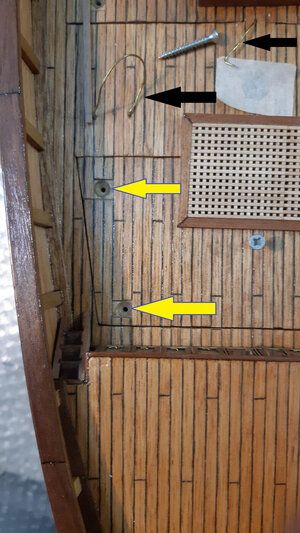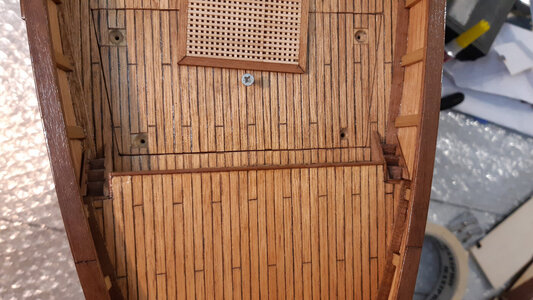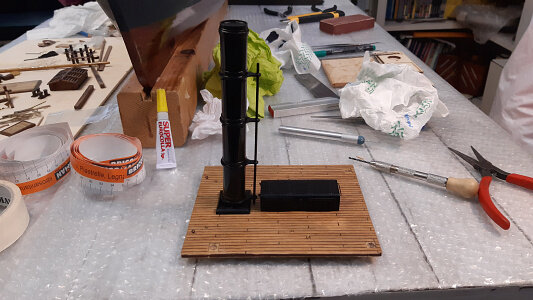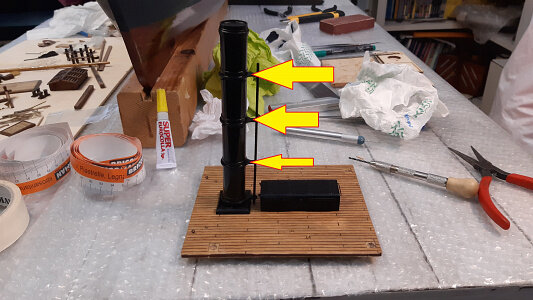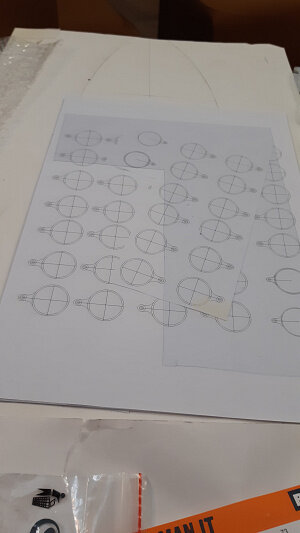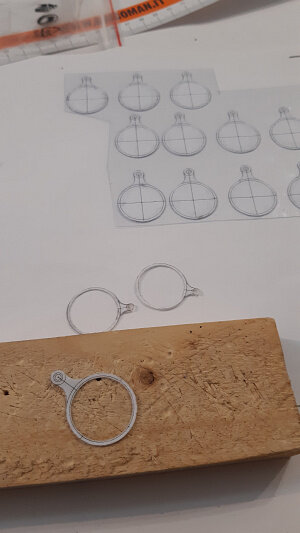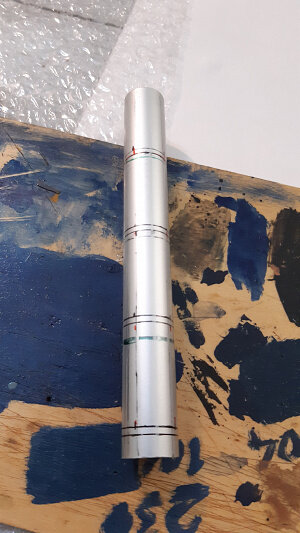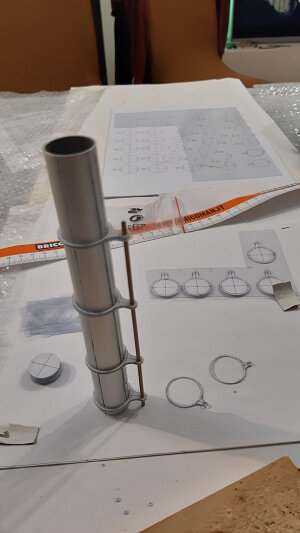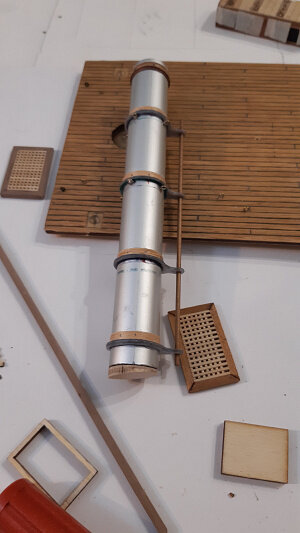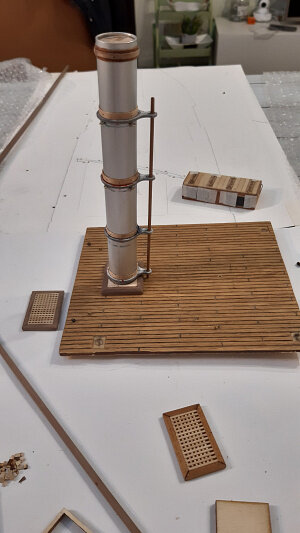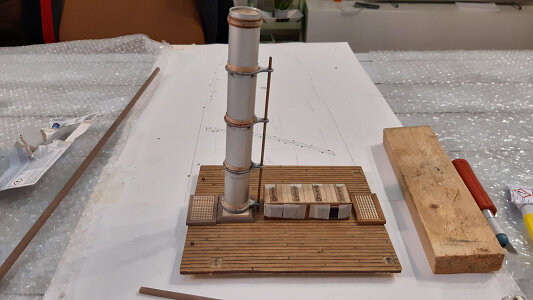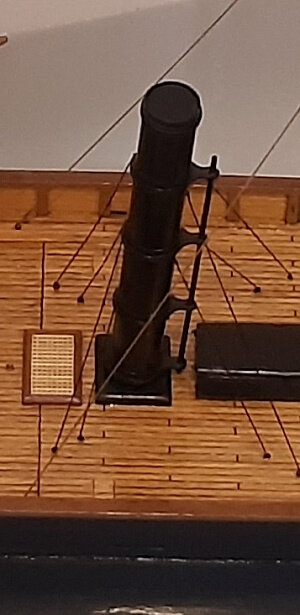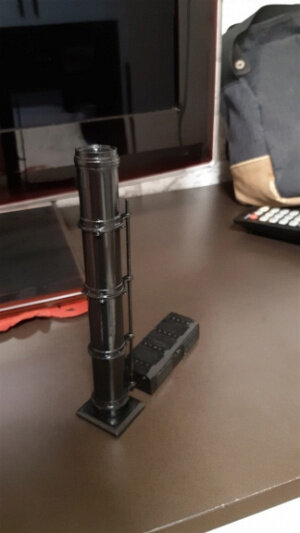Apart from "liking" what you're accomplishing, I still have questions...
From your pictures I deduced that you're using some type of wood screw to secure the access hatches to the hull. Wouldn't it be more sensible to use inserts and countersunk bolts (that is with normal thread) to secure your hatches with? My view on it is that a normal thread with a nut/insert is much more durable than a wood screw engaging in wood.
Ciao Johan, le domande mi fanno sempre piacere.
E quanto mi piace parlare di argomenti di modellismo!
E' bello costruire ma poi anche commentare.
Che posso dire? : le tue domande fanno sempre centro.
Questo è un aspetto che ho valutato a lungo e, a suo tempo, ho ascoltato il parere di un modellista dinamico che faceva esattamente le tue stesse osservazioni.
"normal thread with a nut/insert is much more durable than a wood screw engaging in wood". E' sicuro al cento per cento che sia proprio così.
Allora mi chiederai: "perchè hai comunque usato le viti a legno?"
Partiamo da una premessa che vale per questo tuo giusto quesito ma vale per tutto il topic.
In questa fase stiamo parlando ancora di soluzioni già adottate.
Le mie scelte non sono le migliori, alcune non le rifarei.
Avevo pensato anche a una chiusura con magneti.
La risposta è molto semplice: in molte circostanze ho cercato la via più veloce (o almeno quella che mi sembrava più veloce).
Preparare una filettattura in cui far entrare la vite e cercare le viti adatte mi è sembrato più complicato.
Certi lavori a me sembrano difficili e lunghi anche se ad altre persone risultano semplici e veloci.
Io ci ho messo molto, troppo tempo per realizzare il modello con pause molto lunghe.
Ho pensato: compro delle viti piccole, leggere, standard che potrei ritrovare in qualsiasi negozio in qualsiasi momento.
Creo dei tasselli di legno robusti e spessi in cui entrerà la vite, basterà fare un foro poco più piccolo della vite a legno e poi sarà lei a creare da sola la filettatura.
Come fare a non rovinare la filettatura essendo di solo legno?
Ingrassando la vite e facendo attenzione quando avvito.
Considera che le aperture sono molto limitate, solo i portelli centrali vanno aperti per inserire/togliere le batterie.
Gli altri saranno usati solo nel caso di avarie.
Considera che i coperchi (ma questo l'ho scoperto solo dopo averli fatti) non avrebbero alcun bisogno della vite, non si aprirebbero nemmeno capovolgendo la nave.
Ma ormai le ho messe e le uso. Uso le viti perchè comprimono meglio le superfici a battuta (quel famoso scalino) per cui è previsto comunque un leggero strato di grasso per la tenuta stagna.
Non si può pensare che il ponte non sia inondato di acqua durante la navigazione con forte vento al traverso.
E se la filettatura si rovina lo stesso?
Qualora la filettatura sia totalmente compromessa e inultilizzabile, posso sempre fare un foro cilindrico da 6 o 8 mm di diametro , infilare un tondino di noce dello stesso diametro, incollarlo e poi rifilettarlo con la vite a legno, ma non credo ce ne sarà bisogno.
Attenzione. alcune viti che hai visto nelle foto solo solo temporanee e mi sono servite per aprire i coperchi in mancanza di altri appigli per le dita.
Poi questa funzione verrà assunta dall'argano, dall'osteriggio ecc. ecc. Ogni coperchio avrà la sua "maniglia".
Hi Johan, questions always make me happy.
And how much I love talking about modeling topics!It's nice to build but then also comment.
What can I say? : your questions always hit the mark.
This is an aspect that I have considered for a long time and, at the time, I listened to the opinion of a dynamic modeller who made exactly the same observations as you.
"normal thread with a nut/insert is much more durable than a wood screw engaging in wood". He is one hundred percent sure that this is indeed the case.
Then you'll ask me, "Why did you use wood screws anyway?"
Let's start from a premise that applies to this right question of yours but applies to the entire topic.
At this stage we are still talking about solutions already adopted.
My choices are not the best, some I wouldn't make again.
I had also thought about a closure with magnets.
The answer is very simple: in many circumstances I have looked for the fastest way (or at least the one that seemed fastest to me).
Preparing a thread for the screw to fit into and looking for suitable screws seemed more complicated to me.
Some jobs seem difficult and long to me even if to other people they seem simple and quick.
It took me a long, long time to make the model with very long pauses.
I thought: I'll buy some small, lightweight, standard screws that I could find in any store at any time.
I create sturdy and thick wooden dowels into which the screw will fit, just make a hole a little smaller than the wood screw and then it will create the thread itself.
How can you avoid ruining the thread as it is only made of wood?Greasing the screw and being careful when screwing.
Consider that the openings are very limited, only the central doors need to be opened to insert/remove the batteries.
The others will be used only in the event of failure.
Consider that the lids (but I discovered this only after having made them) would not need the screw at all, they would not open even by turning the vessel upside down.
But now I have them and use them. I use screws because they compress the abutment surfaces better (that famous step) for which a light layer of grease is required for watertightness.
It cannot be assumed that the bridge is not flooded with water while sailing in strong crosswinds.
What if the thread gets ruined anyway?
If the thread is totally compromised and unusable, I can always make a cylindrical hole of 6 or 8 mm in diameter, insert a walnut rod of the same diameter, glue it and then rethread it with the wood screw, but I don't think there will be any need.
Attention. Some screws that you saw in the photos were only temporary and were used to open the lids in the absence of other grips for my fingers.
Then this function will be taken over by the winch, skylight etc. etc.
Each lid will have its own "handle".
